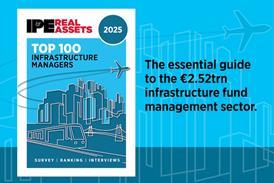Given the generally huge variations between Europe and Asia, it may come as a surprise to learn that the two share some common ground when it comes to real estate investment trends. But that is what INREV’s Investment Intentions Survey 2013 reveals. by Casper Hesp
Given the generally huge variations between Europe and Asia, it may come as a surprise to learn that the two share some common ground when it comes to real estate investment trends. But that is what INREV’s Investment Intentions Survey 2013 reveals.
by Casper Hesp
The survey was carried out in conjunction with ANREV, INREV’s sister organisation in Asia with 72 investors taking part. It was broken down by region in which the group is already invested or intends to invest. The most popular products for investors active in Europe and Asia are joint ventures and club deals. In Europe, these are slightly more popular with 47.7% of investors expecting to increase allocations compared to 36.8% in Asia. With ongoing concerns about levels of involvement, investors tend to be looking for vehicles that provide a middle ground, giving them greater control as well as access to expert management through fund managers. There are, however, differences between direct and listed real estate allocations. Close to 50% of investors expect to increase allocations to direct real estate investment in Europe compared with 15.8% in Asia. Listed real estate investments are more popular in Asia with 30.6% of investors expecting to increase their allocations compared with only 8.8% in Europe. The findings show healthy expectations for increases to non-listed real estate funds - 41.7% in Asia and 37.9% in Europe. However, investors in both regions are also looking to decrease their allocations to non-listed. In Europe, where there is a stronger trend towards direct investing and separate accounts, the decline is 31.0%. In Asia Pacific it is 22.2%, but this picture may be the result of influences from European investors active in the region. As far as the benefits and drawbacks of investing in non-listed property funds are concerned, investors in both regions cite access to expert management as their main driver. For 54.3% of those active in Asia Pacific, the ability to access countries is important compared to 26.7% in Europe. The opposite is true in relation to access to specific sectors where 50.0% of those active in Europe consider this to be a reason to invest compared with 28.6% of Asian investors. This may partly be explained by the fact that investing in Asia Pacific is less familiar territory for European investors so they are keen to gain access to different countries whereas in their home region - where their knowledge is higher - they are looking at a more targeted sector approach. Alignment of interest is the main obstacle for investors in European funds at 58.6%. The lack of rigorous alignment during the crisis is to blame for much of this trend. In Asia, alignment is less of a problem (44%) whereas transparency is a much bigger challenge as highlighted by 47% of respondents. In contrast, only 17.2% of investors in Europe see this as an obstacle. Indeed, transparency has declined steadily as an issue in Europe - most likely as the result of dramatic improvements in research and standards over the past decade. When it comes to fund style preferences, core and value-added are equally favoured by 43.8% of investors in Asia. They also expect to make net allocations to value-added funds at 22.2% over the next two years. In Europe, 50% of investors prefer core. However, value added has seen a notable increase in popularity since last year, up from 21.9% to 42.9%. While this indicates that investors in Europe may be starting to feel more comfortable about higher levels of risk for the first time since the crisis, their projected net allocations to value added funds over the coming 24 months only amount to 1.6%. Core, it seems, remains a dominant investment trend. With a wide range of different markets available to investors in Asia Pacific as well as more funds targeting markets with higher risk/return profiles, it is not surprising that there is a greater preference for opportunity funds in Asia Pacific (12.5%) compared with Europe (7.1%). However, the relatively low number across both regions suggests that investors remain generally risk averse. It’s a mixed picture but, arguably, more balanced than might have been expected.
Click on the link below for the full story (Premium Content)










